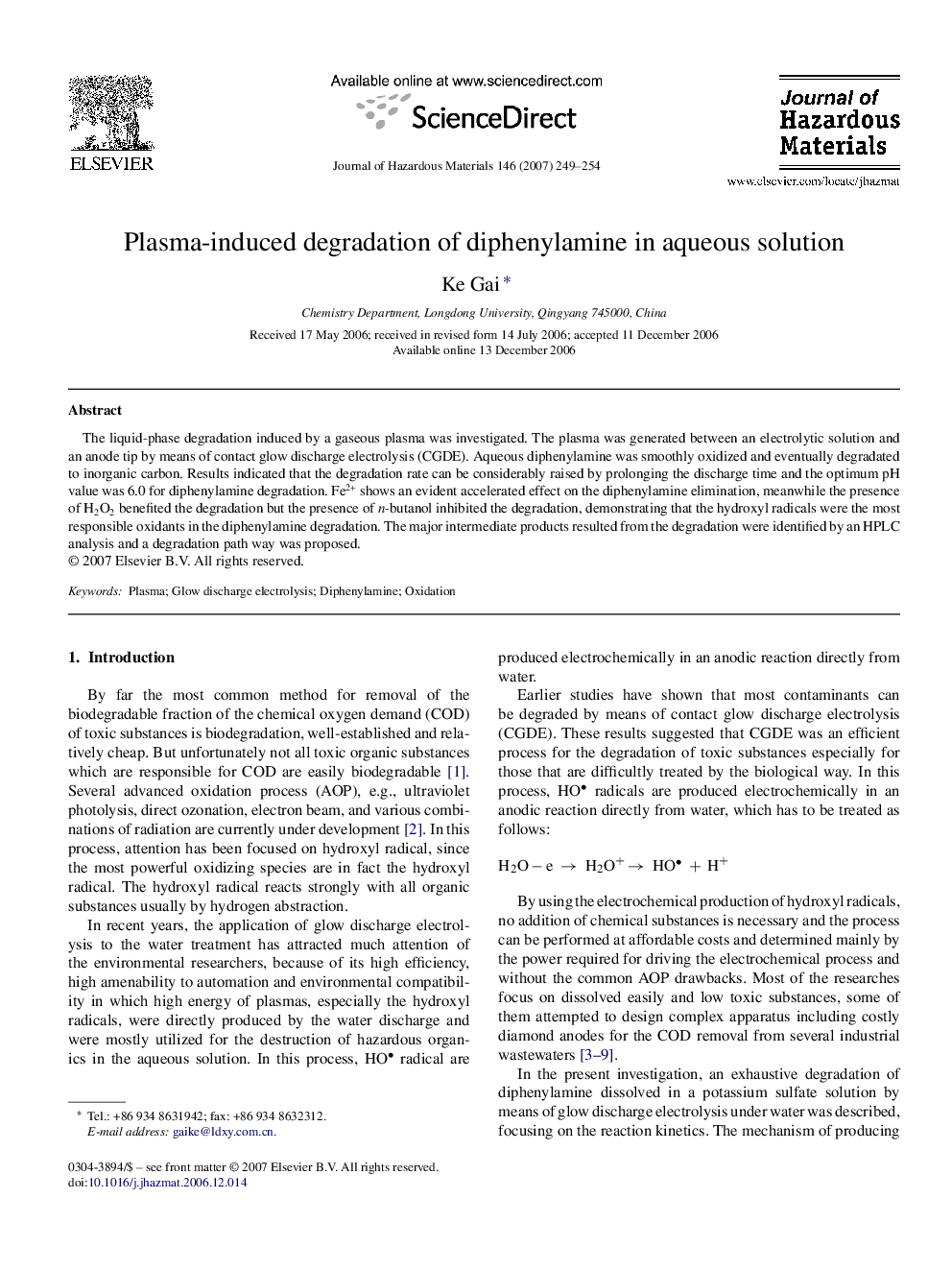| Article ID | Journal | Published Year | Pages | File Type |
|---|---|---|---|---|
| 584050 | Journal of Hazardous Materials | 2007 | 6 Pages |
Abstract
The liquid-phase degradation induced by a gaseous plasma was investigated. The plasma was generated between an electrolytic solution and an anode tip by means of contact glow discharge electrolysis (CGDE). Aqueous diphenylamine was smoothly oxidized and eventually degradated to inorganic carbon. Results indicated that the degradation rate can be considerably raised by prolonging the discharge time and the optimum pH value was 6.0 for diphenylamine degradation. Fe2+ shows an evident accelerated effect on the diphenylamine elimination, meanwhile the presence of H2O2 benefited the degradation but the presence of n-butanol inhibited the degradation, demonstrating that the hydroxyl radicals were the most responsible oxidants in the diphenylamine degradation. The major intermediate products resulted from the degradation were identified by an HPLC analysis and a degradation path way was proposed.
Related Topics
Physical Sciences and Engineering
Chemical Engineering
Chemical Health and Safety
Authors
Ke Gai,
